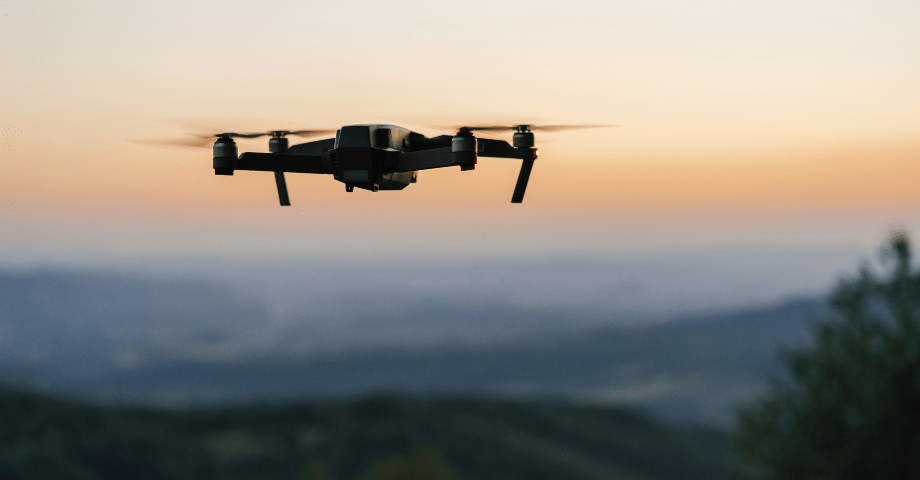In the realm of wildlife monitoring and conservation, advancements in technology have revolutionized the way researchers and conservationists observe and study animals in their natural habitats. Among the latest innovations, the DJI Air 3 Drone stands out as a powerful tool for capturing high-quality aerial footage and conducting wildlife surveys with unprecedented ease and precision. In this blog, we will delve into the versatility and capabilities of the Latest DJI Air 3 Drone, particularly the DJI Mavic 3 Pro, in the context of wildlife monitoring.
Understanding the DJI Mavic 3 Pro
The DJI Mavic 3 Pro represents the pinnacle of drone technology, offering an impressive array of features and functionalities tailored for professional-grade aerial photography and videography. Equipped with a high-resolution camera and advanced flight control systems, this drone is well-suited for a wide range of applications, including wildlife monitoring, environmental research, and conservation efforts.
Key Features for Wildlife Monitoring
1. High-Resolution Camera
At the heart of the DJI Mavic 3 Pro lies a state-of-the-art camera capable of capturing stunning 20-megapixel stills and cinematic 4K video footage. With its Hasselblad camera and 4/3 CMOS sensor, the Mavic 3 Pro delivers exceptional image quality, clarity, and detail, making it ideal for capturing intricate wildlife behavior and habitat dynamics from above.
2. Advanced Flight Performance
The Mavic 3 Pro boasts advanced flight performance capabilities, including a maximum flight speed of 42.5 mph and a maximum flight time of up to 46 minutes. This extended flight time allows operators to cover larger areas and conduct more comprehensive wildlife surveys without the need for frequent battery changes, enhancing efficiency and productivity in the field.
3. Intelligent Flight Modes
With intelligent flight modes such as ActiveTrack 5.0 and Spotlight 2.0, the Mavic 3 Pro offers enhanced tracking and subject recognition capabilities, enabling users to effortlessly follow and capture moving wildlife with precision and accuracy. These intelligent flight modes automate certain aspects of flight control, allowing operators to focus on framing the perfect shot without having to worry about manual piloting.
4. Obstacle Avoidance Technology
Equipped with an array of sensors and advanced obstacle avoidance technology, the Mavic 3 Pro can navigate complex environments with ease, ensuring safe and reliable operation even in challenging terrain. This feature is particularly valuable for wildlife monitoring applications where drones may need to maneuver around trees, rocks, and other obstacles to capture footage of elusive or fast-moving animals.
5. Remote Controller with Built-in Screen
The Mavic 3 Pro comes with a dedicated remote controller featuring a built-in screen, providing a convenient and intuitive interface for controlling the drone and monitoring live footage in real-time. The integrated screen eliminates the need for connecting a separate mobile device, streamlining the setup process and reducing the risk of connectivity issues in the field.
Applications in Wildlife Monitoring
The Latest DJI Air 3 Drone has opened up new possibilities for wildlife monitoring and research, offering researchers and conservationists unprecedented access to remote and hard-to-reach environments. Here are some of the key applications of the DJI Mavic 3 Pro in wildlife monitoring:
1. Population Surveys
The high-resolution camera and extended flight time of the Mavic 3 Pro make it well-suited for conducting population surveys of wildlife species. Researchers can use the drone to capture aerial imagery of habitats and count individuals, providing valuable data for population assessments and conservation planning.
2. Behavioral Studies
By capturing detailed aerial footage of wildlife behavior, researchers can gain insights into animal movements, social interactions, and habitat use patterns. The Mavic 3 Pro’s advanced flight control features and intelligent tracking modes facilitate the tracking and observation of individual animals without disturbing their natural behavior.
3. Habitat Monitoring
Monitoring changes in habitat structure and vegetation cover is essential for understanding ecosystem dynamics and assessing the impact of environmental changes on wildlife populations. With its high-resolution camera and precision flight control capabilities, the Mavic 3 Pro enables researchers to capture detailed aerial imagery of habitats and monitor changes over time.
4. Anti-Poaching Efforts
Drones have become valuable tools in the fight against poaching by enabling rangers and conservationists to monitor protected areas and detect illegal activities from the air. The Mavic 3 Pro’s long flight time and advanced imaging capabilities make it well-suited for conducting aerial patrols and surveillance operations in remote and inaccessible areas.
Conclusion
The DJI Mavic 3 Pro represents a significant advancement in drone technology and offers unparalleled capabilities for wildlife monitoring and conservation. With its high-resolution camera, advanced flight performance, and intelligent flight modes, the Mavic 3 Pro provides researchers and conservationists with a versatile and reliable tool for capturing aerial footage, conducting wildlife surveys, and monitoring habitats. As technology continues to evolve, drones like the Mavic 3 Pro will play an increasingly important role in efforts to protect and preserve the natural world.



